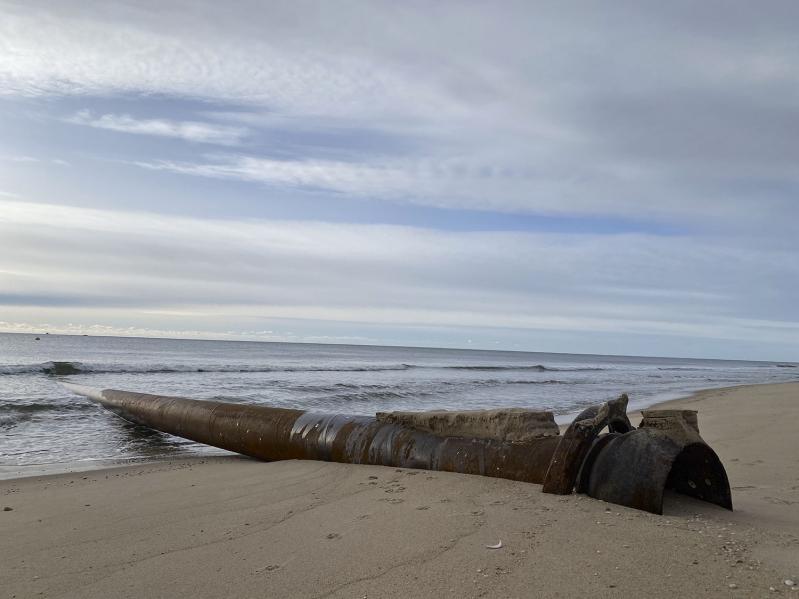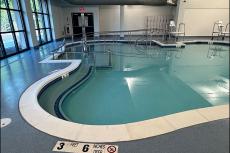To mitigate coastal erosion, Southampton Town has contracted the largest dredging company in the United States to place 1.2 million cubic yards of sand along a stretch of coastline between Bridgehampton and Sagaponack, following a referendum within the beach erosion control districts.
The project began at Town Line Beach in late January and will move west toward Flying Point Beach in Water Mill. The town anticipates it will take two months in all.
“The key is to learn from nature and to mimic nature because more often than not, nature has already figured out the best way to do it,” said Aram Terchunian, a coastal geologist at First Coastal Corporation, a Westhampton Beach engineering company leading the project.
With nature in mind, Mr. Terchunian conducted research, going as far back as the 1950s, to understand how the beach looked in its natural state: its size, the rate of erosion over time, and the total amount of sand lost. Using that information, he calculated how much sand was needed for the project.
Once complete, the project will have four main functions. First, “the beach is the first defense against coastal erosion,” so a wide, sandy beach provides additional protection from the ocean.
Second, sand on the beach “blows around quite a bit,” and as it does so, it will help build up the dunes with “natural vegetative growth.” Third, the project will create additional habitat for “all different types of creatures,” such as piping plovers, along with a place for plants like seabeach amaranth to take hold. Last, it provides humans with additional space for recreation.
The process began last month with sand sampling. About three-quarters of a mile offshore, the company examined sand on the ocean floor, checking to see that it had “the same grain size, the same texture, and the same color as what’s on the beach.”
“Finding the sand is the absolute key,” Mr. Terchunian went on. “All the other things fall in line after that.” Machinery then piles sand onto the beach, letting waves distribute it “in the way that nature thinks is best.” Then the company monitors the distribution over 10 years.
In 2014, the company undertook an earlier version of the same project for the town. Three years later, the American Shore and Beach Preservation Association named it the “best restored beach in America.” During the monitoring phase, First Coastal “found that the beach performed precisely the way that we anticipated it would,” so this time the company is “basically fine-tuning that design.” Dunes along that stretch of coast had accumulated an additional 30 cubic yards of sand since the start of that project.
A suction dredge from the Great Lakes Dredge and Dock Company will handle the dredging. In the beginning, sand will be pumped through submerged pipelines to be deposited onto the beach. On the shore, bulldozers will push the sand level, the town said in a release.
The dredging is funded by the beach erosion control districts in Sagaponack and Bridgehampton. After agreeing to undergo the dredging via referendum, the town “becomes the instrument that then executes that project,” Mr. Terchunian said.
Immediately after nourishment, the beach will be “very wide.” After around 12 months, natural forces will again level the beach, returning it to a standard slope. In the end, the six-mile stretch of beach will be about 40 to 60 feet wider than it is now, according to Mr. Terchunian.
At any given time, about a thousand feet of beach will be affected. After three to six days, the crew will move on to the next section. The dredge is expected to make from 100 to 300 feet of progress each day.
Equipment will be stored at Sagg Main Beach and Flying Point Beach for the duration of the work. Beach access at both places will be restricted, although beachgoers can park in designated areas and follow signs to get down to the sand. Work will occur every day, including holidays, unless rough weather or sea conditions require a shutdown. Lights from the machines may be noticeable from nearby houses.
Coastal Science and Engineering of Columbia, S.C., handled part of the engineering. Periodically, representatives from that company and First Coastal will be on site to monitor the progress, the town said.




